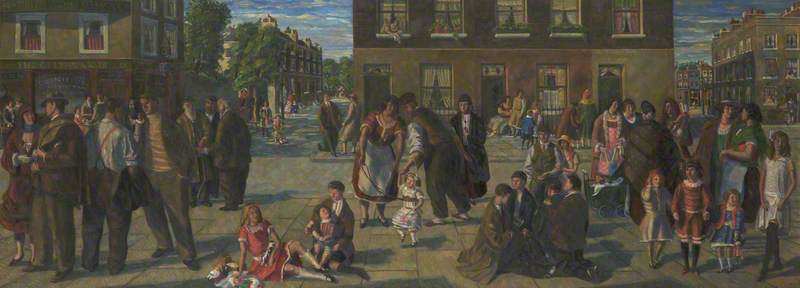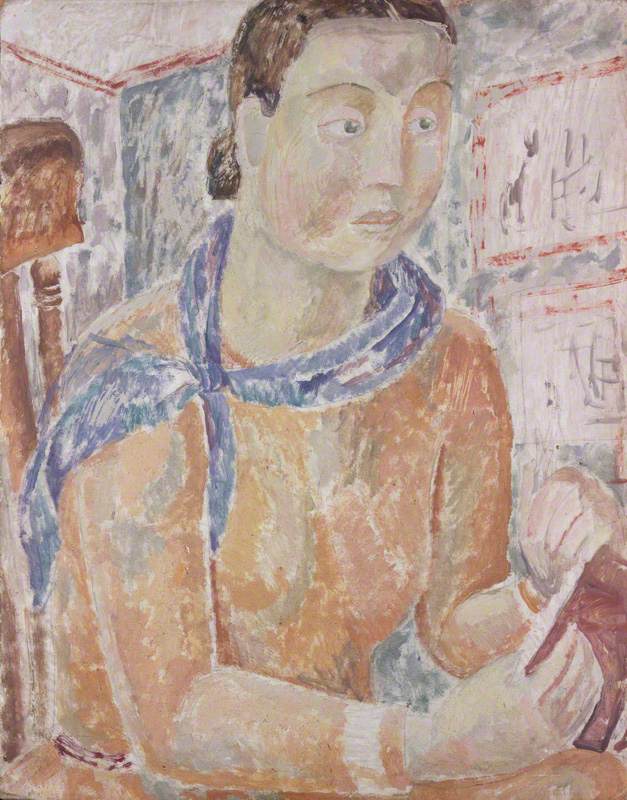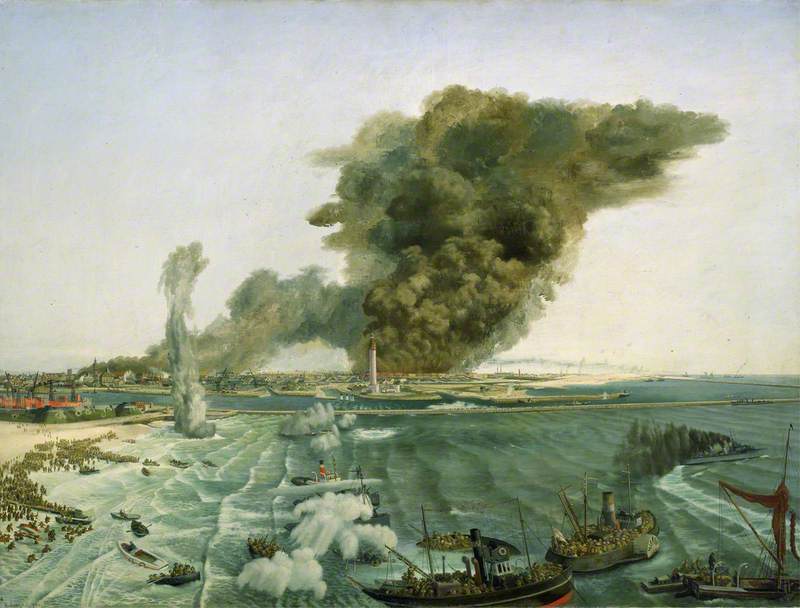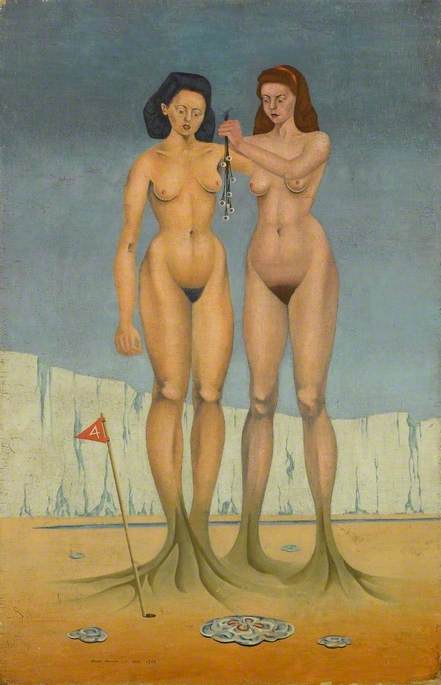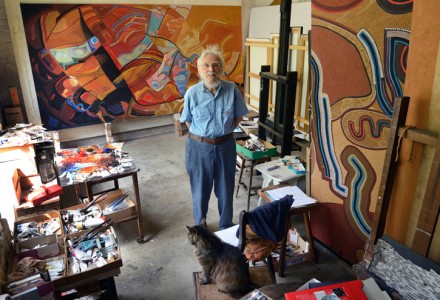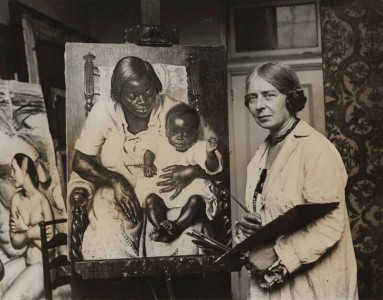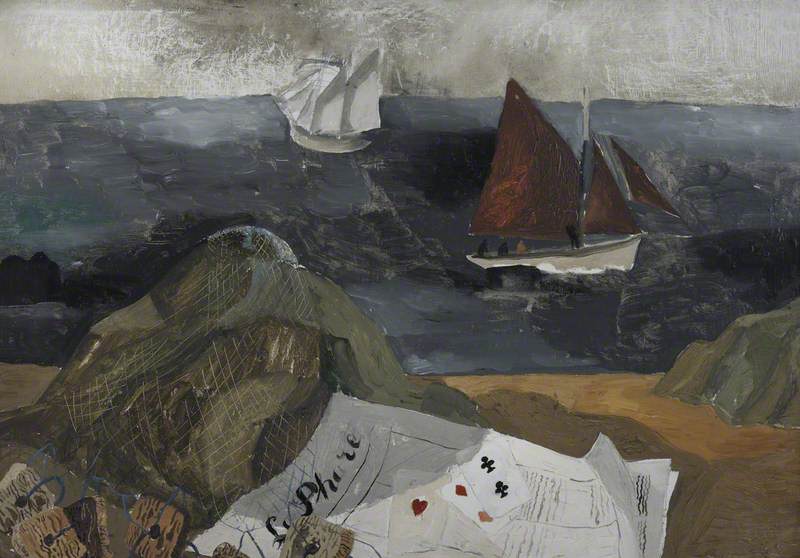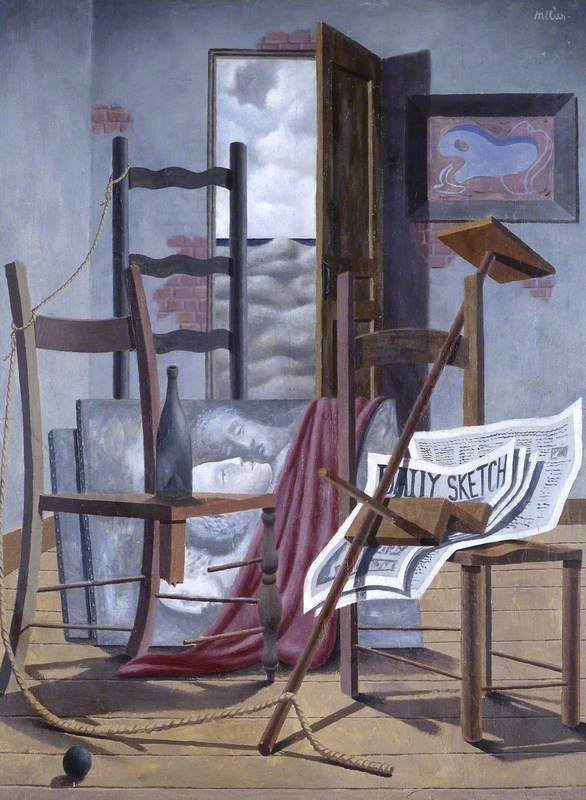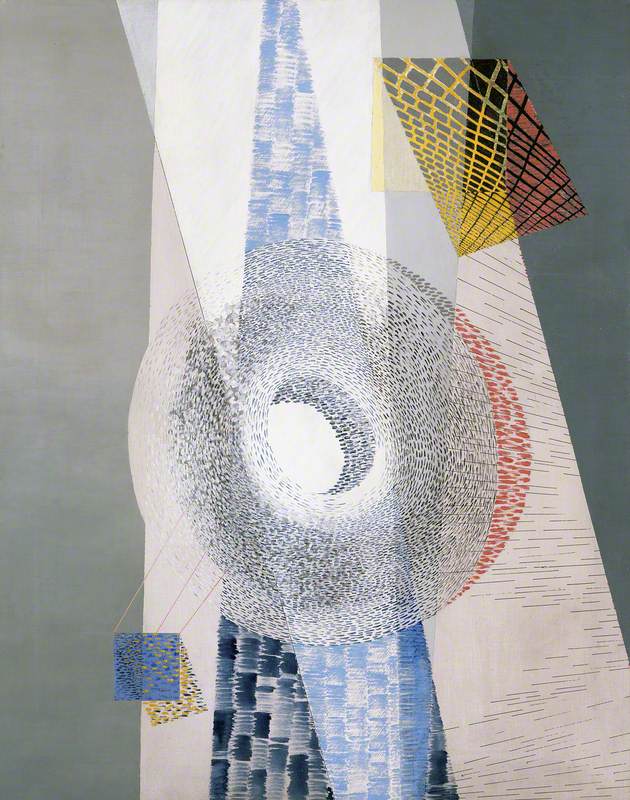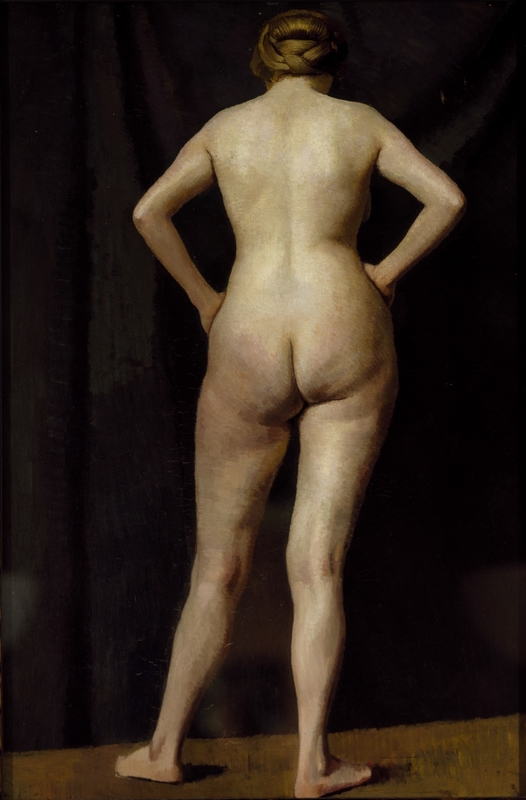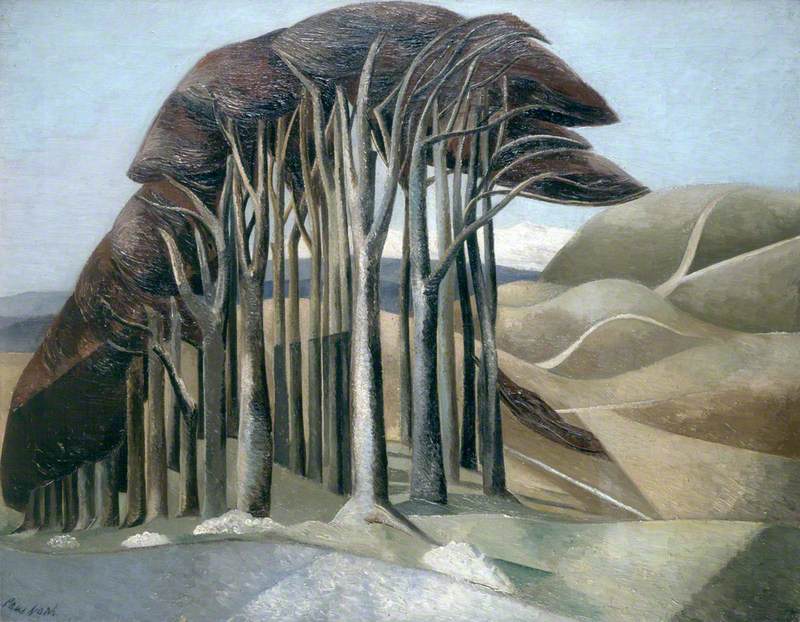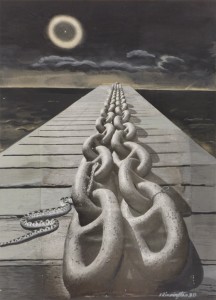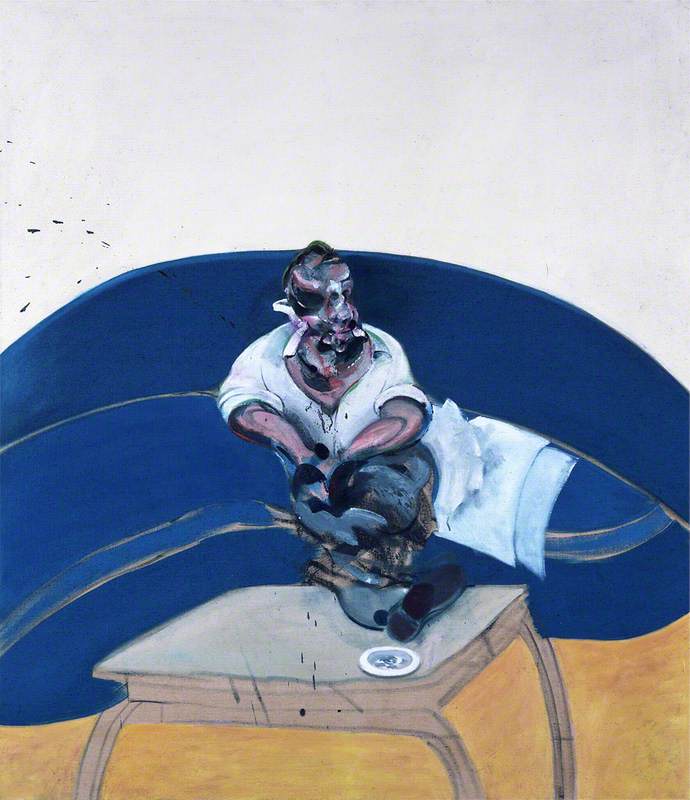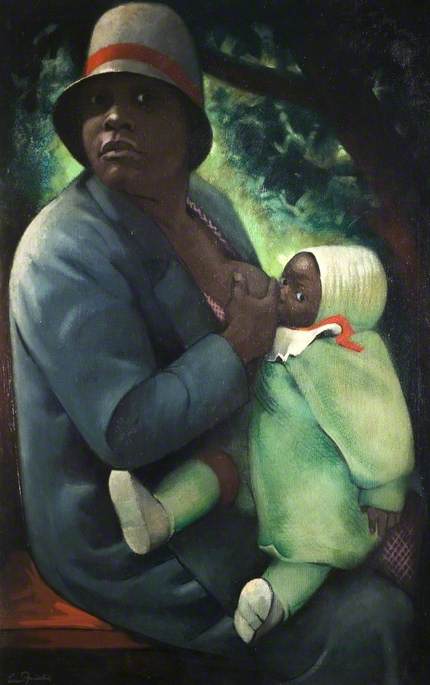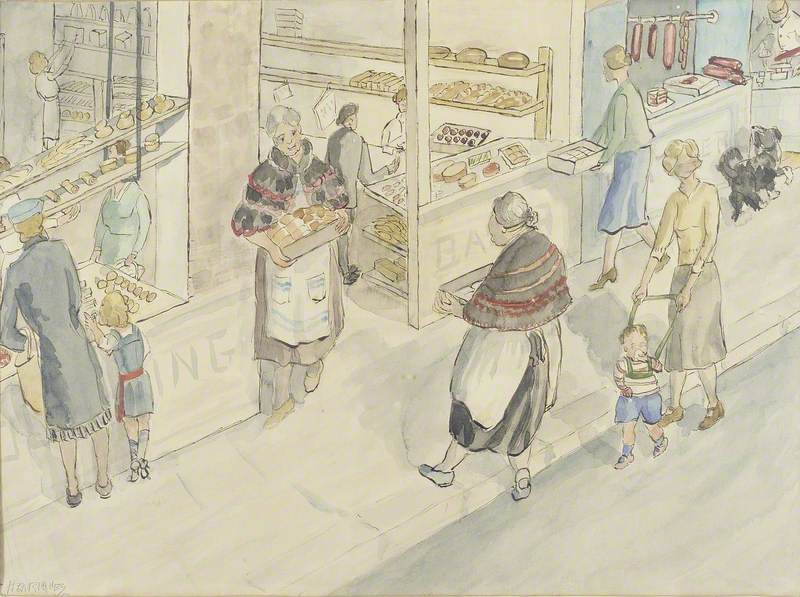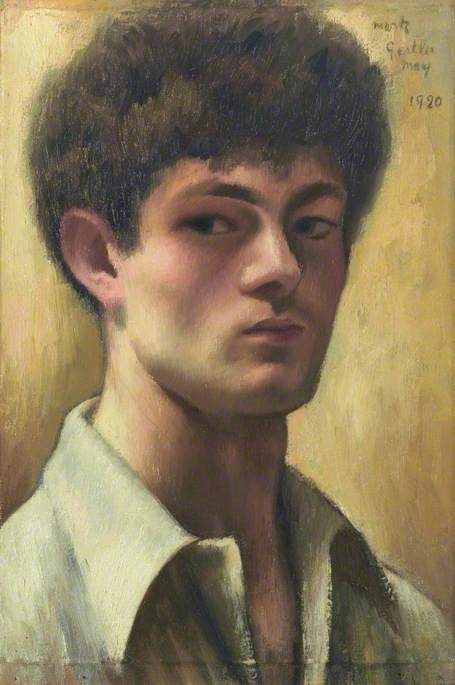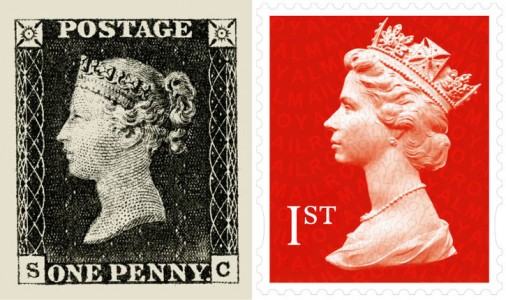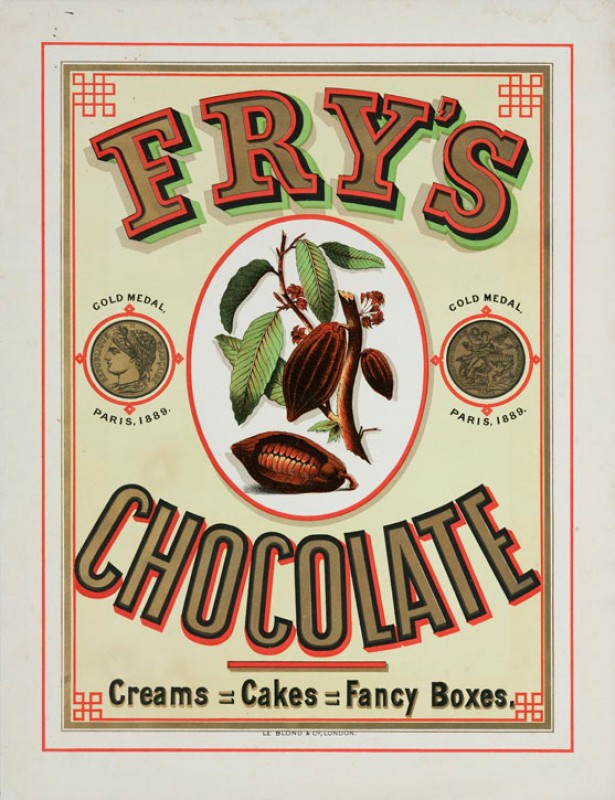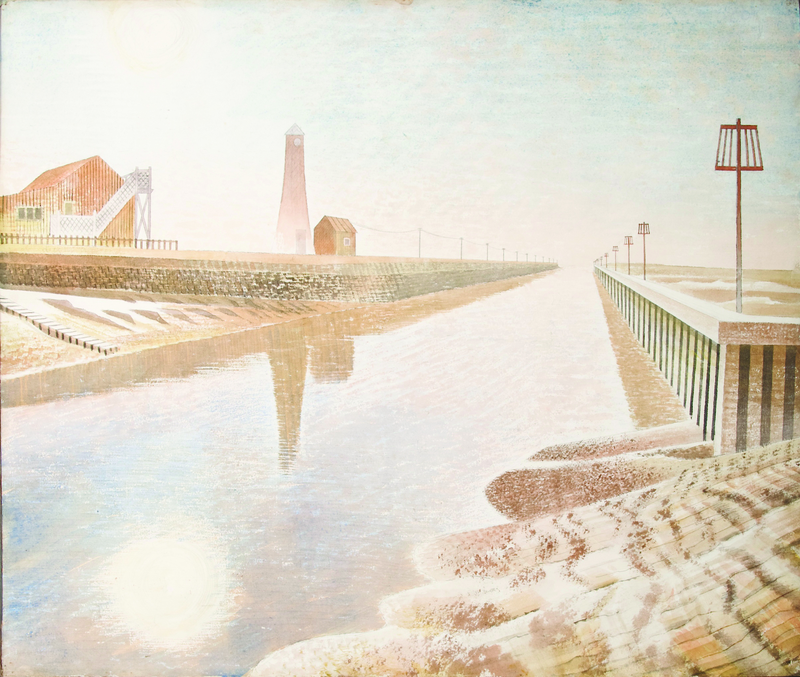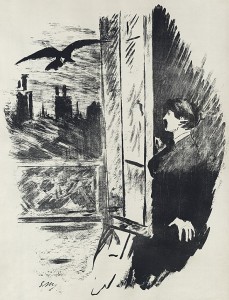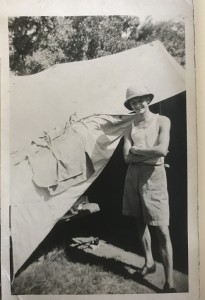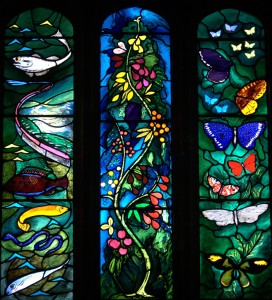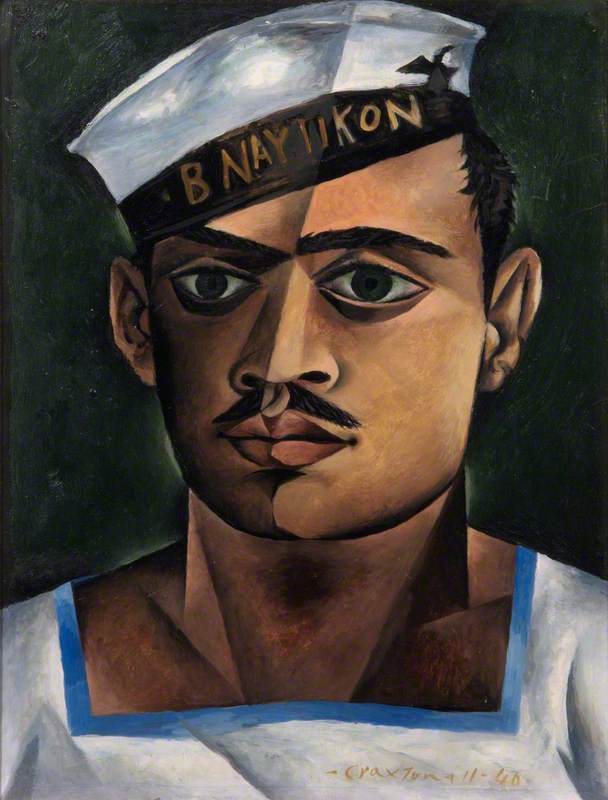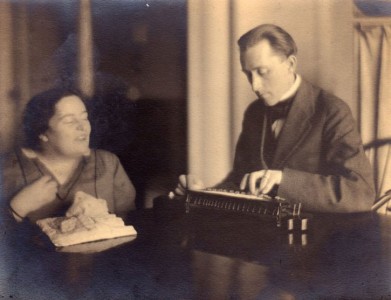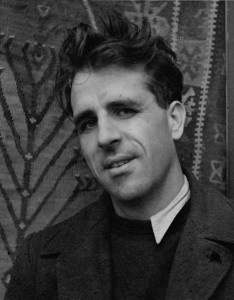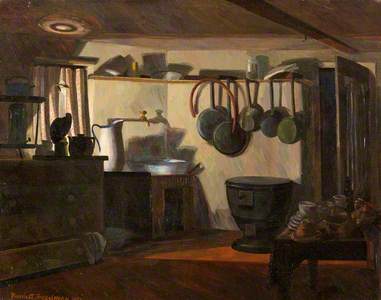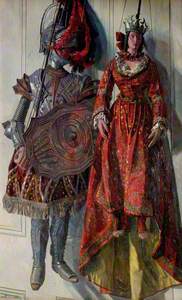A peer of Eric Ravilious and Edward Burra, Barnett Freedman was one of Britain's most sought-after commercial designers in the mid-twentieth century.
People were at the heart of Freedman's work. In mid-twentieth-century Britain, Freedman's art could be seen on book jackets to posters on the London Underground and beer advertisements in pubs.
Theatre 'pair poster', London Transport
1936, lithographic poster by Barnett Freedman (1901–1958) 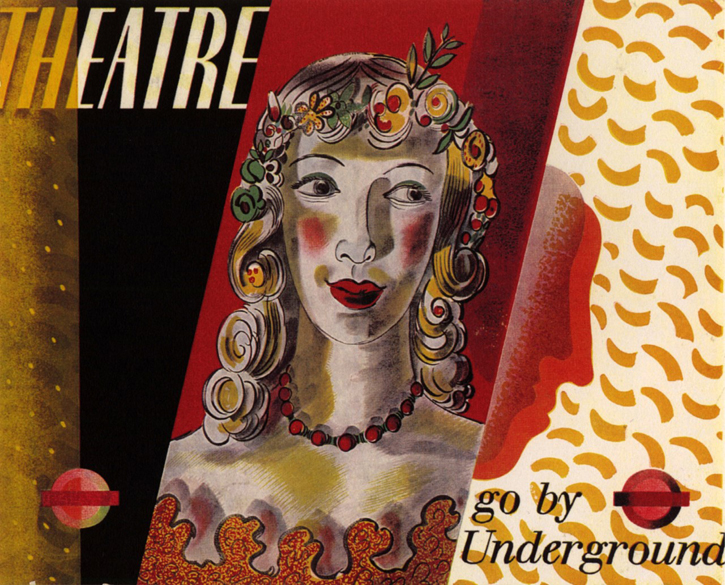
'Barnett Freedman: Designs for Modern Britain' opened at Pallant House Gallery, Chichester in March but closed after only three days due to the COVID-19 pandemic. Now reopened, the show celebrating the life and work of Freedman is the first major reappraisal of his work since his 1958 Arts Council retrospective at the Tate Gallery.
Barnett Freedman
c.1946, photograph by unknown artist 
Freedman was born in the East End of London, to Jewish-Russian parents who had arrived in England in the 1890s. One of five children, Freedman had a difficult childhood due to ill health. He spent long periods in hospital and from the ages of nine to thirteen he was largely bedridden in the London Hospital. With help from the nurses and doctors, he taught himself to read, write, play music, draw and paint.
As a young man, he worked as a junior draughtsman and later as an apprentice at an architect's practice, where he learned lettering. Although busy at work during the day, from 1915 he used his free evenings to attend art classes at St Martin's School of Art. In 1922 he gained a place to study at the Royal College of Art, where he joined a group of talented artists including Edward Bawden, Eric Ravilious, and Enid Marx. Freedman was able to hold his own amongst his fellow students and gained the nickname of 'Soc' (from Socrates) due to his lively nature and propensity for debate, using his cockney wit.
After leaving the RCA, Freedman had a difficult few years trying to establish himself as an artist. Although he was a talented painter he found it hard to make a living and so he was pleased when he was offered teaching work at the college.
Things changed after he received his first major commission from book publisher Faber & Faber to design and illustrate Memoirs of an Infantry Officer by Siegfried Sassoon.
Cover of 'Memoirs of an Infantry Officer' by Siegfried Sassoon
1931, illustration by Barnett Freedman (1951–1958), published by Faber & Faber 
The success of this led to commissions for many more book designs and his distinctive book jackets and illustrations set the standard within publishing from the 1930s to the 1950s. His designs for editions of Leo Tolstoy's War and Peace (1938) and Anna Karenina (1951) are considered two of the finest examples of twentieth-century book design.
Illustration for 'Anna Karenina' by Leo Tolstoy
1951, lithograph on paper by Barnett Freedman (1901–1958) 
In 1935, Freedman designed 'The King's Stamp', a postage stamp to commemorate the Silver Jubilee of HRH King George V. During its run, over one million of the stamp were sold across the world. The press proclaimed that Freedman was 'the world's best-selling artist'!
Silver Jubilee of George V commemorative stamps
1935, stamp designs by Barnett Freedman (1901–1958) 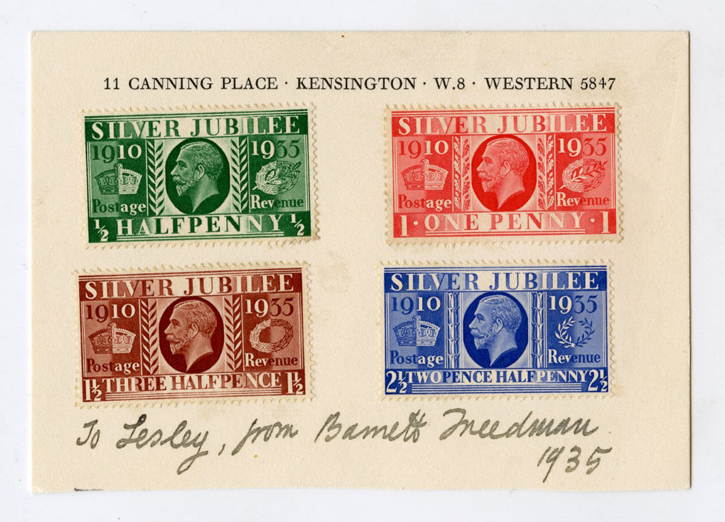
He became known for his commercial work and was soon the go-to designer for commercial projects for companies including London Transport, Ealing Film Studios, Shell, Lyons' Tea Houses and the Post Office.
In mid-twentieth-century Britain, his art could be seen by anyone in their everyday life: from book jackets to posters on the trams and buses, plus prints on the walls of pubs and tearooms.
During the Second World War, he was appointed as an official war artist alongside the likes of Henry Moore, Graham Sutherland, Eric Ravilious and Evelyn Dunbar.
He was particularly fascinated by the relationship between man and machine as illustrated by 15-Inch Gun Turret, HMS 'Repulse', August 1941, painted following Freedman's time spent on board the battlecruiser HMS Repulse. Freedman later made this image into a lithograph for the Ministry of Information. He was deeply shocked when HMS Repulse was destroyed during the war in December 1941.
As well as dramatic large-scale paintings he painted sensitive portraits of the people he met: workers, soldiers and submarine crew. This included portraits of those on HMS Repulse.
Fatigue Duty
1940, watercolour and pencil on paper by Barnett Freedman (1901–1958) 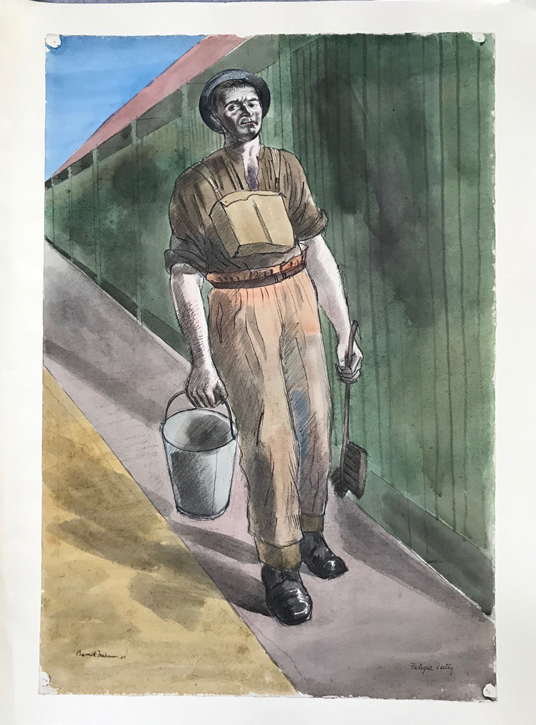
Soon after it was destroyed he received a letter from Janet Newbury, widow of Douglas Newbery, Surgeon Commander, who had died when the Repulse went down, requesting a copy of the portrait Freedman had painted of her husband. She told him that Douglas, 'spoke of you in several of his letters and obviously enjoyed your company so much and the opportunity it gave him to talk of other things besides naval 'shop''.
People were always at the centre of his work and humanity was a main driving force in his life. He painted some captivating street scenes of London, one of which he developed into a lithograph called People (1946) for the series of lithographs made for J. Lyons & Co to decorate their teashops.
One of his last lithographs was The Darts Champion (1956) made for a series of lithographs for the Guinness Brewery to advertise the first Guinness Book of World Records in the pubs and working men's clubs. His image of the darts player perfectly demonstrates his ability to capture people and is a masterful lithograph.
The Darts Champion (for the Guinness Prints)
1956, lithograph on paper by Barnett Freedman (1901–1958) 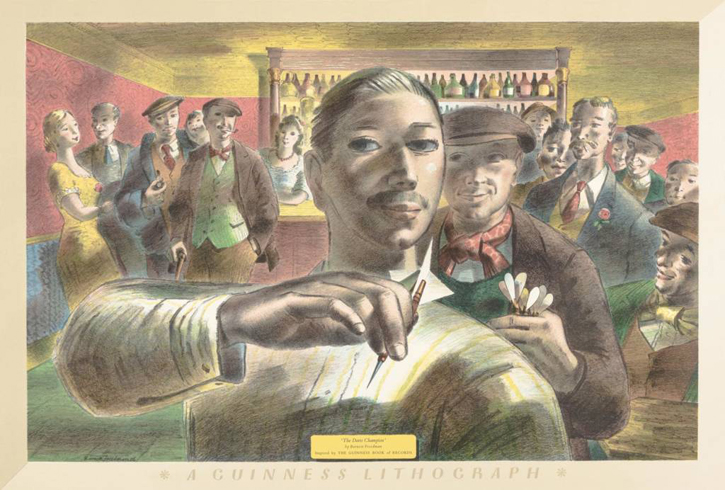
This mix of creativity and technical ability in auto-lithography set him apart from many artists of the time. Freedman was able to cross the boundaries between fine art and commercial design becoming one of the outstanding artist/designers of his day. Freedman was awarded a CBE in 1947 and made Royal Designer for Industry in 1949. He had a lasting legacy in British book illustration, printmaking and graphic design.
It seems hard to believe that Pallant House Gallery is hosting the first major exhibition of Barnett Freedman's work for over 60 years. It is long overdue, and given the reviews and busy visitor numbers, it seems people would agree. The exhibition includes many works that are being shown in public for the first time in many decades. Sadly there are some substantial works that could not leave their museum stores due to their poor condition. The hope is that this reappraisal of Freedman's work, illustrating his place in the history of modern British art, will enable more of his work to be conserved and shown in the future.
Barnett Freedman (1901–1958)
1947, photograph by an unknown artist 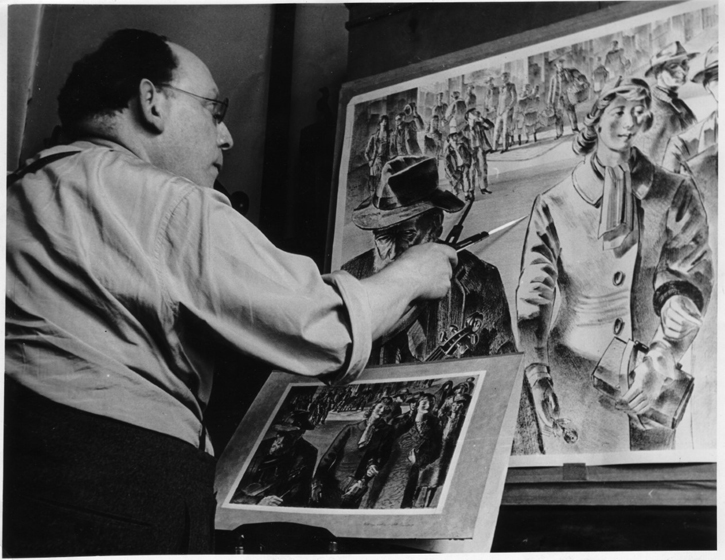
Barnett Freedman died peacefully at home of heart failure in 1958, aged only 56. A loyal group has championed his work over the intervening decades and thanks must go to those who kept supporting Freedman's legacy. His late son, Vincent Freeman, also donated an important archive of Freedman's work to the Manchester Metropolitan University Special Collections.
'Barnett Freedman: Designs for Modern Britain' runs until 1st November 2020. There is also a fully illustrated catalogue to accompany the exhibition. For further details visit www.pallant.org.uk
Emma Mason, curator of 'Barnett Freedman: Designs for Modern Britain'




